- Administrator
- Albums and Singles
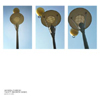 Reworking a site-specific piece she performed in 2007 in New York City, this disc finds sound artist Andrea Parkins using a slew of amplified objects along with her own processed accordion to create an hour long work of bloops, blips, and scratches. The combined effect of which transcends genre in favor of a pure and unadulterated sonic exploration for the electronic age, as her myriad patches decompose much of the sound into pieces that situate the listener on the verge of witnessing, in her own words, "things falling apart."
Reworking a site-specific piece she performed in 2007 in New York City, this disc finds sound artist Andrea Parkins using a slew of amplified objects along with her own processed accordion to create an hour long work of bloops, blips, and scratches. The combined effect of which transcends genre in favor of a pure and unadulterated sonic exploration for the electronic age, as her myriad patches decompose much of the sound into pieces that situate the listener on the verge of witnessing, in her own words, "things falling apart."
It's an exciting place to be, but a precipitous one as well, and success in this scenario is often judged largely as nothing more than an avoidance of potential disaster. Yet Parkins puts this tendency to rest with ease, breaking the work into six tracks that each explores her immense hi-fidelity electronic swathes interwoven with aurally tactile amplified objects. This can be seen from the get-go, as "i" opens with a series of gentle scrapes that sound like a comb run over a table. Soon electronic washes glide in, adding to the alien trajectory of the work whose overall organizing principles feel more like a Cagean experiment with chance operations and "small sounds" then the contemporary electronic works most prevalent today.
To some extent, it seems to be this distinction that best sums up Parkins' sound. In the environment Parkins sets up, no sound is uninteresting and each detail is worth the attention afforded it in such an open sonic space. It is music whose visual accompaniment might well change the entire effect (as one sees the contact mic'd brushes--or whatever she's using--run across some metallic sheet). Instead, the disc provides only the aural imprint of the work, and the result is refreshingly abrasive without being overtly harsh. This is hyper-reality, not sur-reality.
Elsewhere Parkins uses her processed accordion, an instrument the timbre and effect of which is barely recognizable among the clicks and nearly sterile screes of data breakdown. This is perhaps clearest on "ii," as the accordion tones wheeze and wooze against a noisy field of sound that could well be a recording of some microscopic insect world. Each tone is clear and concise, but barely any sound is decipherable.
Ultimately this means that barely anything on here approaches any kind of groove in the typical sense. Sure, there are drones, patterns, constructions and even notes, but the overall build leaves little to hold on to, making each second as surprising and intriguing as the last. It's refreshing to hear someone who sounds as though even they are discovering the material as the piece is underway, adding to the genuine sense of new that emanates throughout the work. This is not "experimental" music, but what it is is far more intriguing. It is a genuine example of sound exploration that raises an eyebrow in that unique space between curious discovery and terrified intrigue, and that is too rare a thing in a world that so frequently bestows the title of "experimental" upon itself.
samples:
Read More
- Administrator
- Albums and Singles
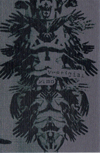 Kentucky's Vestigial Limb is not likely to emerge from the endless, faceless hordes of the harsh electronics tape underground anytime soon, but Ray Shinn is intermittently really damn good at what he does. I did not expect Kentucky to be a particularly fertile bed for avant-garde electronics.
Kentucky's Vestigial Limb is not likely to emerge from the endless, faceless hordes of the harsh electronics tape underground anytime soon, but Ray Shinn is intermittently really damn good at what he does. I did not expect Kentucky to be a particularly fertile bed for avant-garde electronics.
 
905 Tapes
Vestigial Limb's Ray Shinn creates extremely dense and complex noise collages using tapes, a record player, and electronics.Notably, it is surprisingly listenable stuff- more noise-damaged ambient than harsh noise.Unfortunately, he can be maddeningly inconsistent, despite showing flashes of brilliance and inspiration.
The first of the five untitled tracks on Sour Gas Kills is unquestionably my favorite: a deep and engulfing roar with subtly shifting melodic swells buried in the maelstrom.Occasionally it is punctuated by stutters or strangled feedback squawks, but the oddly soothing and wavering avalanche continues unabated for nearly nine minutes.There is a staggering amount of stuff happening, which makes for enjoyable repeat listenings, but none of it detracts from the engulfing wash of sculpted entropy.
The very brief second track is lurching and spacious and built upon a very dense blurt of looping feedback. It works quite well, but it is over far too soon.In fact, the sustained inspiration and crushing awe of the first track is never repeated again, sadly.The side ends with a somewhat off-kilter white noise blowout built around some mangled-sounding string plucking.It coheres into fairly heavy tsunami of low-end white noise, but that particular niche is already oversaturated and Shinn doesn't bring anything particularly unique to it.
Disappointingly, the second side picks up right where the first side left off- another low-end static-y roar (the only real difference is that an occasional stutter has been added).Thankfully, the final track comes a bit closer to the mark.While not as stunning as the opening track, it approximates the feeling of being trapped in a howling, electronically treated, arctic windstorm that is intermittently broken by fleeting flickers of music or radio sounds.It is a bit too one-dimensional to go on for ten minutes, but it is undeniably intense and visceral.Oddly, something that sounds vaguely like human vocals appears near the end, but they manage to sound surprisingly like a confused cow.I haven't decided whether that is a good thing or a bad thing yet, but it is certainly noteworthy regardless.
Overall, I'm a bit disappointed and frustrated by this release, as the first track is inarguably great and shows enormous promise.It is obvious that Shinn knows what sounds good and how to do it, but he seems to be coasting on autopilot for much of the rest of this release.This cassette-only release is limited to fifty copies, so move fast if this is your thing.Even if you miss it, the label is worth checking out anyway.
samples
Read More
- Administrator
- Albums and Singles
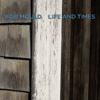 Twenty years removed from his landmark solo debut Workbook, the former Hüsker Dü frontman belatedly produces another album worthy enough to bear his name, after a lengthy string of middling efforts. A mix of vibrant uptempo rockers and hooky ballads, it displays his maturation free of the masturbatory electronica and incredibly uneven songwriting that sullied his legacy these past eleven years.
Twenty years removed from his landmark solo debut Workbook, the former Hüsker Dü frontman belatedly produces another album worthy enough to bear his name, after a lengthy string of middling efforts. A mix of vibrant uptempo rockers and hooky ballads, it displays his maturation free of the masturbatory electronica and incredibly uneven songwriting that sullied his legacy these past eleven years.
One must be a truly devoted and deluded fan to appreciate what Bob Mould has done since the dissolution of Sugar, his nonpareil power pop trio. While never losing his charm, the unexceptional songs on The Last Dog and Pony Show and Modulate simply couldn't match the magnificence of Black Sheets of Rain or Workbook. Much has been said about Mould's insistence on blending electronics into his otherwise traditional alterna-rock formula, and there's little reason at this point to dwell on the less-than-stellar results of his experimentation, other than to say it digressed more than a little uncomfortably towards some sort of Fall Out Boy / Good Charlotte pantomime. After all, Life and Times, his new album, is by far the finest of his post-Sugar discography.
Like last year's half-bad District Line and the genuinely mediocre Body of Song before it, the record kicks off with a terrific opener, in this case the downright romantic title track. Yet unlike the subsequent fizzling-out trend that defined that aforementioned duo of albums, Life and Times amazingly gets even better as it goes along. Both "The Breach" and "City Lights" effortlessly balance his Americana leanings with that unmistakable desire to rock out when the chorus comes around. But things get particularly exhilarating when the opening guitar plucking of "MM 17" rapidly shifts into a raucous rocker replete with overdriven chords and even some fetching soloing. While Mould hasn't completely abandoned the use of synthesizers—unsurprising given his continuing DJ career—he puts them to good, subtle use here. "Argos" is the real shocker, though: a straightforward two-minute punk ditty that resurrects Hüsker Dü for this side of the millennium. It really ought to be the next single for this record, as it deserves modern rock radio play and, yes, even one of those newfangled music videos I've been hearing so much about.
Like its recent predecessors, Life and Times is weighed down by overproduction, though the durability of these memorable, accessible songs counters much of that upon repeat listens. Considering the lushly dissonant closer "Lifetime," I long for something less gratuitously slathered in showy studio effects. It's been two decades since Mould gave us something stripped down with soul-bearing / soul-searching honesty. The appropriate way to follow up Life and Times, the fulfillment of the sound he's been earnestly crafting this century, would be to return to a stark sound that best complements that bruised, beautiful heart.
samples
Read More
- Administrator
- Albums and Singles
 Two artists that I am largely unfamiliar with (Brittany Gould of Married in Berdichev! and Eva Aguilera of Kevin Shields) have formed a band together and unexpectedly floored me with an EP of fractured, otherworldly beauty. I wish surprises like this occurred more often in my life.
Two artists that I am largely unfamiliar with (Brittany Gould of Married in Berdichev! and Eva Aguilera of Kevin Shields) have formed a band together and unexpectedly floored me with an EP of fractured, otherworldly beauty. I wish surprises like this occurred more often in my life.
Sentient Recognition Archive
Caldera Lakes was an extremely good idea: Eva’s harsh power electronics are the perfect foil for Brittany’s woozy and spooky acappella excursions. The sum here is greater than the individual parts, as Eva’s talents are much easier to appreciate in a more melodic environment, while Brittany’s narcotized beauty is enhanced by the visceral heft of Aguilera's violent bursts of dissonance.
"Snowstorm" begins with a simple and eerie looped vocal melody. It is gradually augmented by subtle shimmering and scratchy ambiance, while rhythmic stabs of harsh white noise regularly disrupt the alien and womblike bliss. The noise becomes increasingly invasive as the track progresses and eventually takes over completely before vanishing and leaving only the floating, melancholy vocal loop. The effect is not unlike flipping through radio stations late at night and finding an unfamiliar, heart-stopping, and totally unexpected song, then having it be mutilated by fading reception, but desperately hoping for a few more fragments to pierce through the static squall. This is exactly what I want from noise music.
Eva and Brittany misstep a bit with the stuttering, glitchy "Shotgun #2," although it eventually coheres into a fairly impressive and pummeling white noise assault near the end. Fortunately, "Tornado" is a welcome (and possibly even superior) return to the brilliant aesthetic of the opening track. A machine-like rhythm, howling storms of white noise, and feedback all fight to drown out Brittany's sleepy mangled vocals, lo-fi Bjork-isms, and wavering mutant nocturnal forest sounds. The closing track, "We Never Talked About It," doesn't play to the band's strengths, as it errs a bit too much on the side of harshness and Brittany's vocals are a bit too goth-y and plaintive, but it still ends strongly on a haunting and lovelorn-sounding vocal loop.
I suppose I cannot enthusiastically proclaim this to be a masterpiece, as I only loved half of the songs. However, the tough part is out of the way for Caldera Lakes: they already have a stunning, unique, and recognizable aesthetic. Hopefully, they will continue to get better and better at consistently finding the perfect balance between beauty and chaos, but it doesn't matter if they do. Even one song as good as "Tornado" or "Snowstorm" per album is enough to maintain my enthusiasm.
samples:
Read More
- Administrator
- Albums and Singles
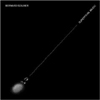 Bernard Szajner is a significant and influential figure in the composition and performance of electronic music. He created Superficial Music mainly from recordings of his earlier album Visions of Dune; by reversing tapes, slowing to half speed, mixing and adding effects. The intriguing results sound harmonious, anxious, consistently stunning and emotionally involving. The 1981 release is now reissued with relevant bonus tracks and extensive liner notes.
Bernard Szajner is a significant and influential figure in the composition and performance of electronic music. He created Superficial Music mainly from recordings of his earlier album Visions of Dune; by reversing tapes, slowing to half speed, mixing and adding effects. The intriguing results sound harmonious, anxious, consistently stunning and emotionally involving. The 1981 release is now reissued with relevant bonus tracks and extensive liner notes.
Bernard Szajner was born in Grenoble as WWII was ending. His Polish Jewish parents hid him in a cave out of fear of the Nazis and of deportation. It may not be a coincidence that he became interested in magic lantern phantasmagorias, automatons, and other spectacles of darkness, light and sound. Szajner worked as a lighting engineer and laser technician for Gong, Magma, and The Who, and on projects such as the Crystal Machine and the Laser Harp. Eventually, tired of dealing with egos, frustrated by lack of funds, and unable to find musicians to compose for his visual displays, he got a synthesizer and learned how to produce the sounds he needed.
Visions of Dune was Szajner's response to Frank Herbert's epic adventure. It didn't do too well but resulted in a commission from Amnesty International to compose a 30 second piece for an anti-death penalty commercial. This led to Some Deaths Take Forever, his concept album exploring the feelings of two prisoners on death row, which was voted Melody Maker's Record of The Week and in their Top 10 LPs of The Year. Szaner would also work with Howard Devoto on Brute Reason; a project mostly ignored or panned by critics.
The title is a deliberate contradiction and comes from Graham Greene's Journey Without Maps which mentions "superficial music which just tickled the surface of the mind, didn't tiresomely claim any deep emotion whether grief or exaltation." The music is some of the most extraordinary musique concrete available anywhere. Perhaps that is down to the integrity of the original Visions of Dune blueprint, but Szaner's use of electronic percussion, pitch change feedback, and drone is done with such a deft touch that nothing sounds like a gimmick, or merely included for shock value. On the contrary, it sounds as if an orchestra is playing perplexing music in a very distant room. I found the short piece "Superficial Music 2" particularly affecting, but the entire album is involving and accessible, while never really trying for overtly emotional territory.
Also included is Oswiecim (the Polish word for Auschwitz, the death camp where more than a million people were killed from 1942-45) a three part work dealing with Szajner's extended family's experience of the Holocaust. Oswiecim originally was side two of Superficial Music. For this CD reissue, two extra tracks (from 1982) are a welcome addition in terms of quality and similarity of sound. Szajner abandoned music for many years (after a deal with Island records) disillusioned that his work was being trivialized by the sole focus on his Laser Harp. LTM's excellent reissue is quite timely, as now, after 16 years away from music (working in theater, painting and light sculpture) Szajner has no less than four new albums ready for release. One of these was apparently composed entirely with digital pencil and piano samples. It would seem that Bernard Szajner has lost neither his experimental drive nor his technical skill. He has belatedly received several prestigious awards in France and I expect he will be name-checked by younger admirers as his work is rediscovered.
samples
Read More
- Administrator
- Albums and Singles
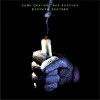 A pioneer in the use of laser technology in entertainment, Szajner's futurism carried into his other pursuits. His second album is a soundtrack to a documentary on capital punishment, but the mood feels more akin to the techno-dystopias popular in science fiction at the time of its release. Fans of Blade Runner or Escape from New York will be familiar with Szajner's aesthetic, but his dynamic songcraft sets him apart from the cinematic snyth musicians of his generation.
A pioneer in the use of laser technology in entertainment, Szajner's futurism carried into his other pursuits. His second album is a soundtrack to a documentary on capital punishment, but the mood feels more akin to the techno-dystopias popular in science fiction at the time of its release. Fans of Blade Runner or Escape from New York will be familiar with Szajner's aesthetic, but his dynamic songcraft sets him apart from the cinematic snyth musicians of his generation.
Although Szajner is somewhat of an obscure figure now, Some Deaths Take Forever was not only critically acclaimed, but influential as well. Carl Craig has stated that it is his favorite album ever. Szajner’s accolades and influential friends are impressive, but looking back his musical innovation may have been overstated. Many people were making dark, sci-fi influenced snyth-music at the time. Some Deaths take Forever doesn’t transcend the genre, but there are elements that make it stand out. Not content to let his synths play themselves, Szajner wrote fully realized compositions with an obvious beginning, middle, and end. The instrumentation is also diverse; Szajner included piano, guitar, electric piano, even a bassoon into the mix. On “Resurrector,” drum rolls combine with pearly arpegiatted tones and phased guitar until the tension boils over like a pot of spaghetti. The clever introduction of new instruments and moods keeps the songs from stagnating. Rather than being just a soundtrack, it has the complexity and self contained logic of a proper album.
As much as I enjoyed Some Deaths take Forever, it is definitely of its time, rather than ahead of it. The digital keyboard was just being introduced and its clear yet flat sound can be heard in the ersatz cello of “A Single Broken Wing” or the fake brass in “Suspended Animation.” The tone of the electric guitars sounds dated as well, the string bends and flighty solos are a bit too theatrical for a documentary about death row. Judging the album by today’s tastes isn’t entirely fair, though. After all, Szajner was working with the technology and musicians available to him at the time. He couldn’t have known that his music was going to sound retro 20+ years down the line. In any case, Szajner’s dynamic sense counterbalances the limitations of his style and instruments.
The album has enough unique moments to be enjoyed instead of relegated to a time capsule. “A Kind of Freedom” begins as a radio collage that morphs into a sad processional with jazzy Rhodes playing and synths that bob up and down in airy portamento. The bonus track, “Thol Ostia,” follows that up with dreamy minimalist ambiance anchored by marimbas and high, cybernetic whistling. These pieces are harder to categorize and they reinforce Szajner’s reputation as a lost genius of synth music. Perhaps he was not as forward looking as his supporters assumed, but his music demonstrates a technical density and driving energy that makes it exciting almost three decades later.
samples
Read More
- Administrator
- Albums and Singles
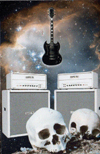 The thought of solo electric guitar improv generally fills me with a mixture of extreme apprehension, apathy, and an overwhelming urge to be elsewhere, but Justin Wright seems to have found a very compelling little glacial niche for himself. White Ohms is a surprisingly hypnotic and unique album.
The thought of solo electric guitar improv generally fills me with a mixture of extreme apprehension, apathy, and an overwhelming urge to be elsewhere, but Justin Wright seems to have found a very compelling little glacial niche for himself. White Ohms is a surprisingly hypnotic and unique album.
Peasant Magik
White Ohms is a companion piece to 2008's Black Ohms and is composed of outtakes from those sessions. All of the tracks are made up of a single electric guitar being looped, but unlike many other experimental guitarists, Wright eschews electronic manipulation: his guitar sounds like a guitar. There are several easily identifiable influences here, such as krautrock, minimalism, Eno, and Earth, but Expo '70 manages to forge a unique sound rooted in endless mantra-like repetition, clarity, and seemingly inhuman patience.
The opening track, "Mantra in White Ohms," initially left me scratching my head, as it is composed almost entirely of a single sustained power chord that slowly ebbs and flows in volume. A soft looped pop approximates a very slow bass drum pulse but literally nothing else is added to the steadily droning wash of sound except for an occasional click or two (until the spectacularly subtle climax of a heavily-delayed random guitar noise). I am actually quite fond of it, as it is improbably mesmerizing, but I was not sure what to expect from the rest of the album after hearing a single chord drawn out for 15 minutes. Amusingly, the second track, "Land of Light," is built upon even less (a single repeated plucked note), taking minimalism to still more perverse extremes. Unlike "Mantra," however, "Land of Light" is augmented by some excellent spectral and spacey improvisation, which Wright is quite adept at. "Empyreal Totem," the final track on the side, continues the trend of incorporating new elements with each successive track, as it has an actual multi-note riff as its foundation. Of course, it is still soothing and languid, but it is a riff nonetheless. Again, the lead guitar is often brilliant. While it becomes somewhat conventional by the end of the track, the first half features a teasingly sparse trickle of near-perfect droplets of glistening sound.
The second side kicks off in somewhat workmanlike fashion with "White Rift," which was disappointing after the consistently enjoyable and surprising first side. Paradoxically, it fails because there is too much going on. The central riff is a bit busy sounding and the repeating distorted sustained power chord is both unsubtle and uninteresting. While it is not necessarily bad, it sounds like it could have come from any number of forgettable krautrock records. Fortunately, the absolutely brilliant "Tonal Elation" follows and delivers beautifully on the promise displayed on the first half of the album. While it is superficially very similar to "Land of Light," there are subtle differences that elevate it to an almost perfect oasis of blissful, droning, spaced-out psychedelia: textural hums, echoey scrapes, drowsy throbs, and even some subtle melodic movement near the end. "Serenity" then finishes the album with twelve languid and sublime minutes of sustained shimmering ambiance.
White Ohms has made me an enthusiastic Expo '70 fan: Justin Wright has an mastery of space and simplicity that has me in awe (as well as a knack for bad-ass seventies-inspired cover art). I imagine this cassette will sell out quickly, as it is a limited edition of 200, but he is a pretty prolific guy so more releases should be on the way. Besides, if the session outtakes are this impressive, I imagine the actual Black Ohms album must be one hell of a record (and it is somewhat less limited).
samples:
Read More
- Matthew Spencer
- Albums and Singles
 Punning does not inspire my confidence. Neither do vague album titles, literary references, or super limited releases. This cassette suffers all four of those faux pas, but the music itself shows nothing but good taste. Considering my appetite for bubbly space music, I'll take it as a lesson not to judge by appearances.
Punning does not inspire my confidence. Neither do vague album titles, literary references, or super limited releases. This cassette suffers all four of those faux pas, but the music itself shows nothing but good taste. Considering my appetite for bubbly space music, I'll take it as a lesson not to judge by appearances.
Aside from what's put to tape, I know very little about Christian Science Minotaur. I do know one thing for certain: they have good taste in books. Proof is that they named all the songs after harpooners in Moby Dick. But as to why, I have no idea. Only the jibbering synth-drums on “Daggoo” approach the fierce literary paganism its namesake implies. As the opening track, it starts off gently with celestial chimes and skittering delay. It grows gradually with increasing tempo, finally working itself into a frenzy of pounding toms and warped ululations. Nothing else on the tape matches the song for strength, but that’s because of the high mark it sets.
Cut by the two sides of the cassette, "Tashtego” bridges the gap between the heavy war whoops of "Daggoo" and the more diffuse second half. Heavy bass swells add tension mid-song, but those are quickly submerged in the track's lunar soil. A sputtering clave beat keeps a quick tempo, but that too settles into the mire. True to his name, "Queequeg" is the odd one of the bunch, having no percussion in it at all. Instead, sweeps of tuned static billow and shake, slowly dissipating into a diamond mist.
Listening to this tape is a pleasure, but it's a lonely one. At 100 copies, Map 3 (of 9) seems a meager gift to the music world. The number is an improvement over previous releases of 30 or 50 copies, but I wish Christian Science Minotaur had more ambition for the public's ear. Cassettes and 3 inch CDRs are great for curios, but don't release your best music on them.
Read More
- Administrator
- Albums and Singles

KID606 is dedicated to bringing his uniquely reckless fucked up and beautiful music to our fucked up and beautiful world. Insipired by the best of electronica, punk, jungle, hiphop, bass, dancehall and techno, Kid606 Fuses it all together with a love of pop culture that Andy Warhol would approve of. Apart from running the labels Tigerbeat6, Shockout, and Tigerbass, Kid606 has performed all around the world many times over, and released records on highly regarded labels such as Ipecac, Wichita, Mille Plateaux, Fatcat, Souljazz, and Carpark. His highly original productions helped spearhead and define the edgy and confrontational glitch and mashup styles that are now common in modern music production. His album "Down with the scene" (2000) was a landmark release for the burgeoning international electronic music scene, with everything from hardcore ragga jungle and serene ambient to abstract IDM and the dubby soul classic "Secrets 4 Sale" with Mike Patton. Things only got more exciting as Kid606 delved deep into the seedy overworld of mainstream music with critically acclaimed unofficial remixes that many people wanted to hear yet no one else was willing to make. All the while releasing his own original and diverse productions as well as official remixes for Amon Tobin, the Rapture, the Locust, Foetus, Depeche Mode, The Bug, Peaches, Dälek, Ellen Allien, Saul Williams, Super Furry Animals, and countless others.
His new album "Shout at the Döner" drops late April, and is easily his most accomplished record to date, it combines all the brash and exciting plunderphonic and sampledelic elements he is best known for with a whole new world of uncharacteristically musical and danceable hooks and styles which are both fresh and timeless. 606 draws on some of his biggest electronic influences like LFO, AFX, Mike Ink, Green Velvet, Mouse on Mars, the Prodigy, Daft Punk, Shizuo, Mr. Oizo and Giorgio Moroder, to make bold and powerful songs about the decline of America, leaving California, broken hearts,drunken hook-ups, social phobias, soulless partying, economic downfall, gnarly basslines, ego worship, moving to berlin, diva vocals, baltimore club, obsessive compulsive disorder, the best parts of horror movies, acidhouse, ADHD, shameless irony, speed garage, megalomania, LSD, satanism and the ever prevalent Döner Kebab, arguably europe's best late night cuisine to consume on the way home from from the club, (Especially if you had to much to drink!).
We think this release is the Kid's first successful stab at what we like to call "schizotronics" actually combining elements of many different Dance music styles into new songs without pretension,trying to hard to fit into any trendy genre, or losing the joy and energy of the driving beats and basslines that make music so fun in the first place. Maybe it's intelligent dance music for people who thought they didnt like intelligent dance music, Maybe it's unintelligent vacant technopunk trash, but you will definitely want to listen to it more then once to find out for yourself!
External Links
Artist Site: http://www.myspace.com/kid606
Label Site: http://www.tigerbeat6.com/
Read More
- Administrator
- Albums and Singles
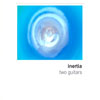 Paul Taylor and Kevin Tomkins have been working together for well over 25 years, most notably as the notorious power electronics duo Sutcliffe Jugend. After a few reinventions of that project, they emerged a few years ago as simply SJ and created two albums, Between Silences and Threnody for the Victims of Ignorance that channeled the same dark atmospheres and tension, but expanded to more instrumentation than just raw synths and screamed vocals. This evolution has continued into Inertia, where guitar is the main instrument, but along with piano, clarinet, and other traditional instruments, to create dark and disorienting audio paintings.
Paul Taylor and Kevin Tomkins have been working together for well over 25 years, most notably as the notorious power electronics duo Sutcliffe Jugend. After a few reinventions of that project, they emerged a few years ago as simply SJ and created two albums, Between Silences and Threnody for the Victims of Ignorance that channeled the same dark atmospheres and tension, but expanded to more instrumentation than just raw synths and screamed vocals. This evolution has continued into Inertia, where guitar is the main instrument, but along with piano, clarinet, and other traditional instruments, to create dark and disorienting audio paintings.
The first of these simultaneously released albums, Two Guitars, is exactly that: the 11 tracks that comprise the disc is based exclusively on the guitar playing of Taylor and Tomkins. Tracks like "Only Walking" and "Paradox" hover barely audible, with understated melodic guitar playing setting the mood, the former mixing with clanging strings and distorted effects, while the latter content to just stay near silence.
Tracks like "Half Life (Remembered)" and "Between Territories" channel 1960s space sound effects through the guitar, with sustained string tones, hammered and bent notes, and a sense of chaos more than control or structure, which are stark contrasts to the simple rhythms of "Lip" and especially "In Memory of a Close Friend (Imagined)." The latter is a beautiful piece of long and slow guitar tones, stretched out to resemble melancholy strings or cello that is somewhat reminiscent, melodically, of Bodychoke’s softer work, but is much tighter and more controlled than most of the other pieces, which all have their fair share of random cuts and blasts.
The two long tracks, "Blue Funk" and "Black Sun," would have fit in nicely in the isolationist scene of the mid/late 1990s, with the dark abstract minimalism and bleak, sparse structures in league with Robert Hampson’s Main or Justin Broadrick’s Final projects, both of which used guitars similarly as raw material.
samples:
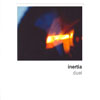
Duel, on the other hand, incorporates a wider set of instruments into the same theme, but into a tighter set of two short tracks, and two 20-plus minute ones. The shorter two, "First Duel" and "Third Duel" match Taylor’s guitar with raw, uncomfortable clarinet from Tomkins. The former retains the arid sprawl of the Two Guitars material, while the latter has a definite bend towards the harsher spectrum, bringing in rough electronic shards and guitar feedback.
"Second Duel" layers the nauseous clarinet with buried clattering noises and other unclear sonics, as the time goes on the track becomes darker and more aggressive, with instruments shrieking and groaning in the most uncomfortable ways while the distant rattling rhythm clicks on.
"Fourth Duel" follows a similar path, but emphasizes the noise guitar and feedback, with the addition of harsh electronic elements that resemble the Cold Meat Industries era Sutcliffe Jugend, but with more restraint. The sound is almost that of church music, perverted and processed into something evil and violent, with a sense of mania that is really consistent with their other projects, but the duo is creating completely different sounds.
Inertia has the same chaotic and sinister sound that they fostered through the years as Sutcliffe Jugend, but in a more mature and nuanced way. Rather than relying on angry screams and abused effects pedals, here they allow in a wider variety of approaches and ideas that prove the attraction to their work is not simply because it is dark or menacing, but because it is well structured and designed.
samples:
Read More
- Administrator
- Albums and Singles
 In their third release on Thrill Jockey in barely a year, the fraternal trio continue their trek into Appalachia-damaged stoner rock that proudly wears its influences on its sleeve, yet takes their backwoods classic Sabbath through Earth sound into a realm all their own.
In their third release on Thrill Jockey in barely a year, the fraternal trio continue their trek into Appalachia-damaged stoner rock that proudly wears its influences on its sleeve, yet takes their backwoods classic Sabbath through Earth sound into a realm all their own.
Across this album there are many of the expected reference points: early Sabbath sludge dirges, a hint of 1990s grunge rock, and a bit of contemporary metal here and there. But, just as it seems like a track settles into something conventional, an oddity will pop out that changes everything entirely. Even early on, on the opening "Laywayed," there is a grunge-influenced alternative plodding, not quite becoming overly murky, but definitely heading that way. Then the mix simply gets cut up seemingly at random, destroying the rhythm that had been fostered.
Some of the shorter tracks lean even more on the unlikely: "Headless Conference" picks up the rhythmic pace to an almost manic jazz one, compared to the lugubrious tracks before. Even more departing, "Heat Pleasure" has the guitar riffs fast enough to create that dull roar that early grindcore bands established themselves with.
More often though, the tracks stay somewhat wrangled in. Both "Wild Knife Night Fight" and "Honey" throw dual vocal harmonies over overdriven bass into more conventional "rock" territory, though the latter especially contrasts the twangy mountain folk sound with grimier sludge aspects, sounding like a more fleshed-out Earth from the modern era jamming with the heroin loving incarnation from some 15 years ago.
Other tracks play up the folk elements more: "Aestival" and "Seminal Shining" have a lazy, yet sinister quality to them that perfectly fits an early fall visit to rural Virginia. The twisted, schizophrenic folk arrangements are somewhat reminiscent of some of the best Angels of Light albums, but never sounds like a direct copy.
With all of this variety and experimentation, it’s refreshing to hear tracks like "Blood Pride" and "Aasstteerr" unabashedly break out the loping blues metal guitar riffs that sound like Ozzy era Sabbath in the best possible way, with just a little bit of twang: the latter bursting out from a noisy chaotic introduction. The disc’s title track pretty much encapsulates the entire album’s ethos into a single 13 minute track, getting in bass heavy sludge, dissonant guitar noise, jazzy improvisation, and pure stoner rock all together in a way that makes sense.
For a young band, Pontiak definitely has their proverbial shit together when it comes to sound and style. In the individual pieces, it might not be something that is breaking new ground or pushing the boundaries, but put together it is a catchy set of normally disparate styles that work well together here.
samples:
Read More

